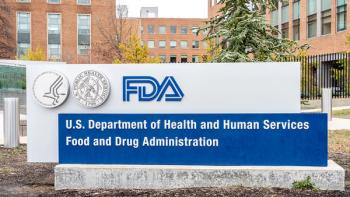
- BioPharm International-12-01-2012
- Volume 25
- Issue 12
Optimizing Global Biopharmaceutical Operations Through Risk Mitigation and Management
A UC Berkeley survey provides insight into biopharma's risk concerns and strategies.
Increasing global competition and heightened customer expectations have for many years now encouraged enterprises in a variety of industries to focus on, and invest in, effective operations management. In most industries, managers no longer have to be convinced of the value of taking an integrated view of the design, analysis, and operation of their manufacturing, service, and logistics operations. Indeed, in many industries, operational excellence and a sophisticated approach to supply-chain risk management based on flexibility, efficiency, and advanced tools for logistics network optimization are no longer a competitive advantage—they are necessary to compete.
BACKGROUND
Consider, for example, the semiconductor industry. Thirty years ago, the semiconductor industry was a growing technology-focused industry and, for the first time, was beginning to face cost pressures. For years, the industry had focused on superior technology, and manufacturing was an afterthought. As long as the products were manufactured as they were envisioned by their inventors, there was little need to pay attention to capacity utilization, operational efficiency, inventory levels, or risk management; if you made them, profits would come.
However, as the semiconductor industry matured and competitive pressures grew, firms began to focus on operations, utilizing resources effectively and efficiently, optimizing systems, and perhaps most importantly, dealing effectively with uncertainty and risk. Significant advances in the science of operations were required to bring about these changes, and by working collaboratively among themselves as well as with academia through organizations such as SEMATECH, semiconductor firms were able to make great strides, pushing the state-of-the-art in semiconductor operations to new heights.
Biopharmaceutical firms now find themselves in a similar position. As the biopharmaceutical industry enters its fourth decade, it is entering a new, more mature phase. Revenue is growing, innovative business models and partnerships are being implemented, and products are coming to market. At the same time, this new maturity brings "adult-sized responsibility" (1). Although the science of biotechnology is advancing rapidly, with the promise of making an enormous impact on society, the operations, supply chain, and logistics of biotechnology is not keeping pace. The ability of the industry to reach its potential requires systems that can produce and deliver products safely, reliably, and cost effectively to patients, while also allowing biopharmaceutical firms to successfully navigate the many risks inherent in the industry. It is becoming apparent that the biopharmaceutical supply chain presents a unique set of operational challenges—demand is highly uncertain and dependent on the results of clinical trials and competitors' actions; supply is highly uncertain; biological processes are complex and incompletely understood; regulatory demands are significant and vary from region to region, including the existence of agencies in multiple jurisdictions that add layers of complexity; contamination is difficult to detect and can have a significant impact; product failures can cost lives; IP concerns are significant; and capacity is extremely expensive and requires long lead times to build or acquire.
RISK SURVEY
Adding to the complexity, mechanisms for drug production are typically not standardized even within firms, technologies continue to change, and generic drugs are poised to dramatically impact the industry (2). In recent years, this changing dynamic has been a key focus of research at the University of California, Berkeley, culminating with the recent establishment of the CELDi Biopharmaceutical Operations Initiative (BOI), focusing on the development of cutting-edge tools, techniques, and approaches to improve production systems, logistics systems, supply chain, inventory, and distribution within biopharmaceutical firms—essentially, biopharmaceutical operations. The research initiative is jointly sponsored by member firms and the National Science Foundation (NSF) under the Industry/University Cooperative Research Program.
Key to the development of this initiative was a series of industry–academia workshops held at Berkeley (one sponsored by the NSF) in which the challenges and opportunities in biopharmaceutical operations management were explored. Across the industry, managers have an overlapping set of concerns, and are eager for better approaches, tools, and techniques that account for the unique characteristics of biopharmaceutical operations and help deal with these concerns. A common theme emerged from these workshops: the need for more effective risk-management tools and approaches. Many firms are specifically focusing on identifying and hedging risks associated with their operations, and are eager to collaborate to improve tools, techniques, and approaches to do so. As a precursor to a concerted research effort in this area, the BOI surveyed nearly 300 industry members to explore attitudes about risk related to suppliers, raw materials, contamination, outsourcing, disposable technology, demand forecasting, inventory, and distribution, with a particular focusing on understanding which concerns are most significant, how firms measure these risks, and what mitigation strategies they currently have in place (see sidebar, "Survey Respondents"). Below is a summary of the survey's key observations.
SURVEY RESULTS
Overall, firms are most concerned with quality risks, contamination risks, and risks associated with lack of visibility into contract manufacturing operations. More broadly, firms are concerned with a broad spectrum of risk-related issues, including supplier risk, manufacturing reliability, inventory risks, cold-chain issues, and forecasting-related risks. In preliminary interviews that accompanied the survey, several respondents even highlighted their concern that firms in the industry lack a "global" or "system" view of risks faced, and rather than developing a cohesive strategy to minimize risk, consider risks one at a time, thereby ignoring their interactions.
Survey respondents
Surprisingly given these concerns, however, there is relatively little focus in the industry on detailed analysis of relevant data, relatively little formal quantification of risk, little formal modeling and simulation of risk or risk mitigation strategies, little focus on inventory optimization, and little measurement of uncertainty.
In contrast, in many industries risk mitigation involves spending considerable resources collecting and analyzing data, assessing the types of variability in the data, optimizing resource utilization to mitigate risk, and developing rigorous models to understand where inventory and other buffers can most effectively be utilized to hedge against risk. Surprisingly, for such a sophisticated industry in so many ways (e.g., compared with basic consumer products or industrial equipment manufacturers), this industry has a qualitative view of risk management. This finding is particularly surprising given the vast amount of data that is collected in the industry.
WHO TOOK THE SURVEY?
The BOI survey was distributed using a mailing list compiled at industry meetings and from Berkeley's BOI industry partners. Although the number of usable responses varies from question to question, surveys were at least partially completed. Forty-six percent of respondents work at biotech/biopharm firms, and an additional 24% work at pharmaceutical firms. The bulk of the remaining respondents identify themselves as equipment or raw-material suppliers, or as employees of contract organizations. Twenty-five percent of the respondents work at large companies (more than 50,000 employees), 20% work at very small firms (less than 100 employees), and the rest are distributed somewhere between those two extremes. Slightly less than one quarter of respondents' firms have no products on the market, while slightly less than half have 20 or more products on the market. In terms of annual sales, respondents also come from a broad spectrum of companies—35% are from large companies with $5 billion or more in annual sales, and the rest of the respondents are relatively equally distributed over the range from no annual sales to $5 billion in annual sales. Respondents' firms operate globally, with sales and manufacturing distributed around the world, and R&D most often concentrated on the US East and West Coasts, and in Western Europe.
About 30% of survey respondents work in R&D, and 20% work in manufacturing; the rest are scattered throughout various roles in engineering, quality, planning, and so forth. About half are managers or directors; the rest are either consultants, or in various roles ranging from the C-suite to independent contractors. Note that the BOI team made no attempt to limit responses from a particular firm, so that the results reflect the opinions of multiple respondents within a firm.
OVERALL VIEW OF RISK
Overall, respondents are most concerned with the risks surrounding manufacturing reliability and production contamination, followed by raw-material supply and outsourcing risk. Forecast errors, catastrophic natural events, regulatory risk, and IP theft ranked further behind, although all are of concern to respondents (see Figure 1). Interestingly, given risk concerns and the inherent uncertainty in this industry, relatively few respondents rely on quantitative modeling tools to assess risk: 72% or respondents firms use failure mode and effects analysis (FMEA) of risk, but fewer than 30% use discrete event modeling, and fewer than 27% use Monte–Carlo analysis, tools that are standard in other industries. Indeed, while 70% of respondents monitor batches lost and on-time performance, half or fewer monitor safety stock levels or customer-service level, although these are key performance indicators that are useful for measuring the cost and effectiveness of risk mitigation strategies.
Figure 1: Respondents indicate their level of concern about key risk categories, where the scale ranges from 1 to 5, with 1 meaning not concerned, 3 meaning concerned, 5 meaning extremely concerned.
Raw-material risk
Of all of the raw-material related risks, single-sourcing stands as the most significant, followed by contamination (other concerns included availability, comparability across vendors, extractables and leachables, and price fluctuations). These results are in spite of the fact that that only 37% of respondents indicate that their firms use multiple suppliers or similar strategies to mitigate the risk, although some responding firms are beginning to identify diversified sourcing as a key goal in the product-development stage. In addition to dual sourcing, firms turn to vendor audits, quality management systems, and large safety stocks of material in order to mitigate these risks. One respondent talked of abandoning a "just-in-time" strategy due to the associated risk. Not surprisingly, inventory costs and inventory levels are the key metrics tracked to assess raw-material acquisition performance (by 58% and 54% of respondents, respectively). Surprisingly, fewer than 15% of respondents explicitly mention tracking quality metrics in this context. In addition, about half of the respondents mention focusing on tracking the fraction of single-sourced raw materials. When determining the appropriate inventory-management policies, a surprisingly large fraction of respondents (40%) of respondents do not use quantitative or scientific approaches. Slightly over half rely on optimization tools to make these decisions, and about 15% (possibly overlapping with the optimization users) also use simulation tools (see Figure 2).
Figure 2: Respondents, as a percentage, indidcate how they make decisions regarding inventory level and/or the number of suppliers used (multiple selections were allowed).
Manufacturing-related risk
The most significant manufacturing-related risk as identified by respondents was contamination, followed in decreasing order by human resources issues, and yield variability. Respondents were also concerned with increasing titers, but seemed less concerned with the challenges posed by disposables (see section below). Respondents also identified a variety of other concerns surrounding product validation, equipment reliability, and managing capacity. Securing sufficient supply and was also noted among the respondents' comments (see Figure 3).
Figure 3: Respondents indicate their level of concern about certain manufacturing-related risks, where the scale ranges from 1 to 5, with 1 meaning not concerned, 3 meaning concerned, 5 meaning extremely concerned.
Four primary strategies are used to mitigate risks including training, statistical analysis, quality management techniques, and a focus on improving both internal and external communication. About 40% of respondents identify training and education as a key manufacturing risk-reduction tool, while more than 30% identify statistical analysis and quality management. Moreover, respondents repeatedly highlight the positive impact of good communications both internally and with CMOs and suppliers on manufacturing yields.
When addressed specifically, manufacturing contamination was reported to be a primary concern of 64% of the respondents (see next section).
Contamination events
Of the various issues and concerns surrounding contamination, media contamination is by far the largest concern: 39% of respondents identified this as their most significant contamination-related concern. Cross-batch contamination was a distant second at 19% (followed by lack of detectability of contamination, and extractables and leachables). To address these concerns, respondents report primarily turning to high-temperature/short-time (HTST) pasteurization, physical segregation, and better assay technologies at roughly equivalent levels (each by between 45% and 47% of respondents). About 60% report experiencing a contamination event once or more a year, and roughly 14% experience such an event once a month or more frequently (see Figure 4).
Figure 4: Respondents rank how frequent key risks become an issue.
Contract manufacturing
Almost 60% of respondents report using CMOs for some or all of their manufacturing. Although respondents show concern about all aspects of their relationships with CMOs (e.g., reliability, visibility, flexibility, and IP) the most dominant concerns are around quality and compliance (these are the only categories for which a plurality of respondents indicated "extreme concern"). To address these risks, the most commonly noted approaches include a comprehensive focus on prescreening and monitoring CMOs, frequent audits, and keeping a representative on the CMO site (and dual-sourcing where possible and reasonable) (see Figure 5).
Figure 5: Respondents indicate their level of concern about certain contract-manufacturing risks, where the scale ranges from 1 to 5, with 1 meaning not concerned, 3 meaning concerned, and 5 meaning extremely concerned.
Disposables
Over half of respondents (53%) currently use disposable technology for commercial manufacturing, and a total of 83% either plan to or are likely to use disposable commercial manufacturing technology in the future. The most reported significant risks around this technology focus, in decreasing order of reported significance are: comparability as products are scaled up for commercial runs, timely availability of supplies from suppliers, and extractables and leachables. To address these risks, respondents turn to many of the same approaches that they use for managing raw-material risks, including using multiple suppliers where possible, stringent vendor qualification and audits, extensive quality control testing and validation, and carefully constructed contracts specifying minimum inventory levels.
Forecasting and demand variability
About half (49%) of the respondents consider forecast errors a significant risk; less than a quarter (24%) are not concerned. In spite of this, 30% do not explicitly model demand variability in their planning process, and another 45% only model some upside and downside scenarios; only 18% explicitly model demand distributions (see Figure 6).
Figure 6: Respondents indicate how well they explicitly model demand variability in their planning processes.
By far, the dominant approach (70% of the respondents) to dealing with demand uncertainty is to hold extra inventory—most of the other cited approaches have to do with securing extra capacity, either internally or through relationships with CMOs. About one third of respondents explicitly track forecast accuracy by comparing point forecasts with actual demand, and about one quarter suggest that their firms do not explicitly track forecast accuracy.
Distribution
Of the various risks associated with finished-goods distribution, cold storage and expiration-related issues are more of a concern than contamination, theft, and counterfeiting. No single approach stands out in the reported mitigation methods for these concerns, although respondents seem to continually explore alternative suppliers and methods for packaging, shipping, and storage (in particular, they mention continual quality auditing of transportation service providers, secure packaging, tracking systems, diversification, inventory management software, and so forth). More than 80% of responding firms store inventory in multiple sites, selecting these sites in most cases for their proximity to manufacturing sites or their low operating costs. Once finished goods shift to distributor control, only 25% of respondents are not concerned with distributors' risks, although only 20% are confident in their visibility into distributors' risks, suggesting a key area of potential improvement.
CONCLUSION AND NEXT STEPS
This survey provides initial insights into the current state of risk management and risk-mitigation strategies in the biopharmaceutical industry. In subsequent surveys, the BOI team intends to explore specific risk-mitigation app-
roaches and metrics currently employed by progressive firms, in order to develop a better understanding of which metrics, tools, and approaches are particularly useful. At the same time, there is clearly a need within the biopharmaceutical industry for analytical tools and approaches that account for the specific characteristics of this industry, and that use the vast quantities of data available to help managers make more rigorous, informed, model-based decisions to manage and mitigate the complex set of risks faced by the industry.
Phil Kaminsky, Jiyang Liu, and Julia Olsen-Claire work at the CELDi Biopharmaceutical Operations Initiative at the University of California, Berkeley.
REFERENCES
1. Ernst & Young, "Beyond Borders: Global Biotechnology Report," 2007.
2. R. Johnson and P. Kaminsky, "Biopharmaceutical Operations: Developing the Science," PharmaFocus Asia 9 (2008).
Articles in this issue
almost 13 years ago
BioPharm International, December 2012 Issue (PDF)almost 13 years ago
Bioanalytical Methods for Sample Cleanupalmost 13 years ago
Report from South Koreaalmost 13 years ago
When Disaster Strikes at Homealmost 13 years ago
Research Policies Pose New Challenge for US Administrationalmost 13 years ago
Patents and Postapproval Batch Testingalmost 13 years ago
Navigating Emerging Marketsalmost 13 years ago
Discovery Pipeline: Understanding Cellular Reprogrammingalmost 13 years ago
Glycan Analysis: A PrimerNewsletter
Stay at the forefront of biopharmaceutical innovation—subscribe to BioPharm International for expert insights on drug development, manufacturing, compliance, and more.




